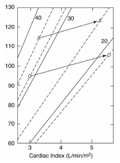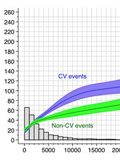The eLitMed.hu medical portal uses computer cookies for convenient operation. Detailed information can be found in the Cookie-policy.
Hypertension and nephrology - 2020;24(01)
Content
[Heart failure with mid-range ejection fraction (HFmrEF) and heart failure with preserved ejection fraction (HFpEF)]
[reduced ejection fraction (HFrEF) is well-known. Physicians are well versed in diagnosing and treating the disease. At the same time, our knowledge is scarce about heart failure with preserved ejection fraction (HFpEF) and heart failure with mid-ranged ejection fraction (HFmrEF). We are diagnosing these cases in a much lower number than the actual ones, and we have no morbidity and mortality-reducing evidence for treating the disease. The summary is intended to provide an overview of the epidemiology, clinical characteristics, morbidity and mortality, treatment options, the importance of the etiological diagnosis and long-term follow- up of HFmrEF and HFpEF based on currently available literature.]
[Thinking globally - the significance of the joint treatment of risk factors]
[Hypercholesterolemia and hypertension - as the key risk factors of ischemic heart disease - are strongly linked to the increasing prevalence of cardiovascular mortality and morbidity. These risk factors are related to each other and half of the hypertensive patients have elevated cholesterol, as well. The recent European hypertension guidelines recommend statin treatment in dyslipidemic and/or subjects at high risk including diabetic or CKD-patients. Reaching blood pressure target if we can hold the patient under 1.8 mmol/l LDL-level results in 60% reduction of the risk of CAD and 17% reduction of stroke. This aim can only be reached if patients regularly take their prescribed medications although statinadherence is the poorest in our country. One of the main tools of improving adherence beyond education is the use of fix-dosed combination.]
1.
Clinical Neuroscience
Is there any difference in mortality rates of atrial fibrillation detected before or after ischemic stroke?2.
Clinical Neuroscience
Neuropathic pain and mood disorders in earthquake survivors with peripheral nerve injuries3.
Journal of Nursing Theory and Practice
[Correlations of Sarcopenia, Frailty, Falls and Social Isolation – A Literature Review in the Light of Swedish Statistics]4.
Clinical Neuroscience
[Comparison of pain intensity measurements among patients with low-back pain]5.
Journal of Nursing Theory and Practice
[Fear of Falling among Geriatric Patients: a Narrative Review]1.
2.
3.
4.
5.






